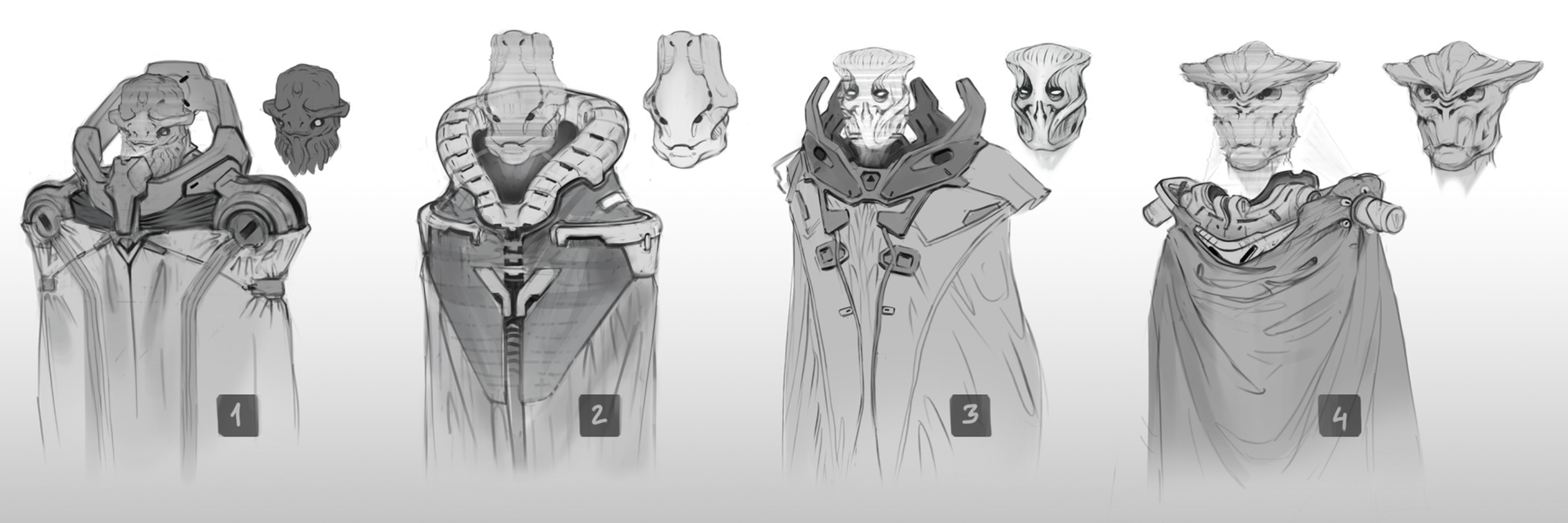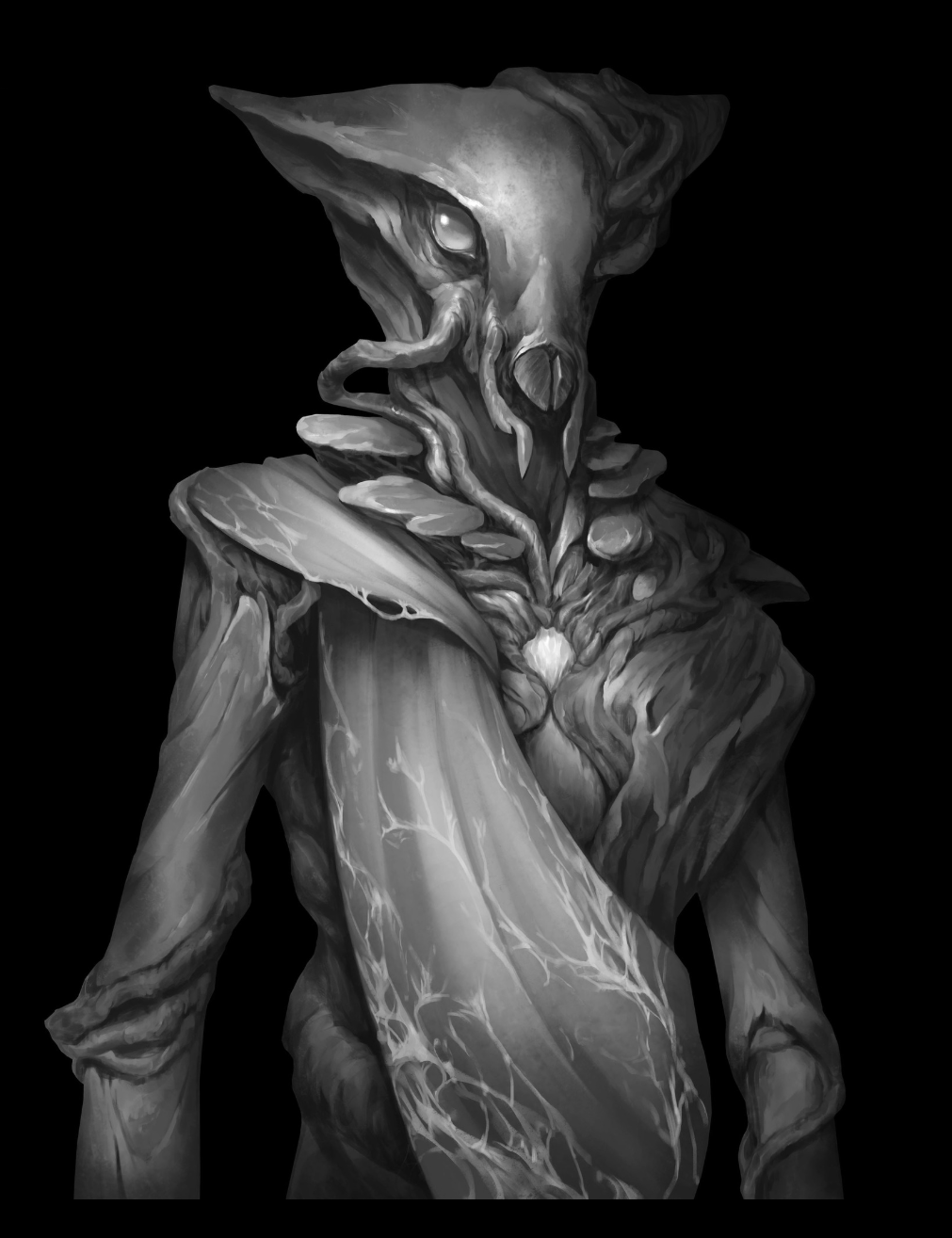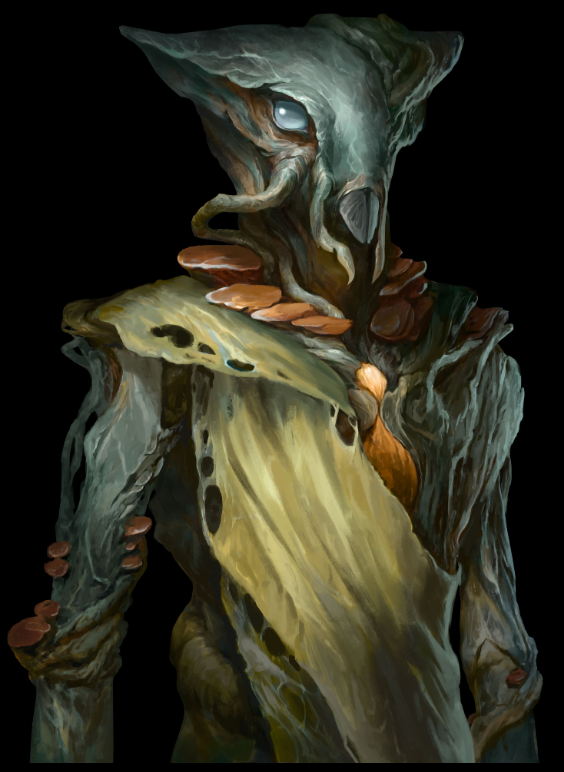over 4 years
ago -
ann-charlotte.mork
-
Direct link
Hello everyone!
My name is Fredrik Toll, and I am the Art Director for Stellaris. For this week's dev diary, we will have a look at how we develop our characters included in the Necroids Species Pack.
Finding ideas Much like when we design the ships, we start out with reference gathering, finding anything that inspires us visually. We gather everything we can find that fits roughly within the theme. In this case it was everything from Venetian masks, Egyptian mummies, Mexican makeup from Día de Muertos, wraiths, ascended energy beings, vampires, dark elves, and of course skulls. We are looking to find as many different ideas as possible.
Once we feel we have enough, we look at what we have, discuss them and put them in clusters, things that relate to each other and might be an idea for a species. We want each species to be as different from each other as possible, as well as trying to fulfill as many different player fantasies as possible.
On of the things we do to add depth to the ideas is we try to come up with a backstory for each of the, to explain a bit more what they are. Does not have to be that detailed, just something to give some context, and adds details, and helps the artist when they paint them, drawing on their history.
A backstory might be something like:
“A species which inhabits a completely sealed suit which they can never leave. You can see through the transparent helmet that whatever they once were, they are a hollow scare version of that.”
“An alien that has kept itself alive through genetic manipulation, the cells no longer die, they just keep dividing. The body has grown uncontrolled and looks weird / mutated.”
Developing ideas So once we have settled on the 15 or so idea’s we need, we start sketching out various ideas. For the initial ones we usually just do line art, sometimes rough shading, it depends on the artist. We always develop at least 3-4 different versions of each character idea before going ahead and developing it further.
Here are some of the early look dev for some species.



After the sketching phase, we use much the same process for developing aliens as we do for ship designs. We start out with rough sketches for the ideas, to see which path we want to go on. Then we choose the one we think has the best potential, develop it a bit further, trying different sub variants / poses. Once we are happy with the idea and its structure, we usually do a color test, look at different ways we can shade them.
Here is an example of what all this looked like for the aforementioned alien which extended life through genetic manipulation.
Rough sketches

Idea Variants / Refinement
Rendering

Color variants
3D Characters Even though the characters are done in 2D, and look like it in game. The way they are made is technically in a 3D software. To do this, the character needs to be split into layers. So before rendering all the details, we split them up into the components they need. Tentacles might be several layers, eye lids, arms etc, anything that moves needs to be on a separate layer. By splitting them up early, the animator can start setting them up with the rough version. While the 2D Artist continues his work on the details. This also enables us to catch any issues with the character earlier.
Character texture

Character in 3D in perspective view
Example of what the character looks like in Maya, all set up and rigged.
So once the color test, and layer split is done, we can finally move on to the final render. This is where most of the work comes in, making it feel more 3 dimensional, making sure the materials look realistic.

--------
That is all for this week. Next week we'll be posting the patch notes!
My name is Fredrik Toll, and I am the Art Director for Stellaris. For this week's dev diary, we will have a look at how we develop our characters included in the Necroids Species Pack.
Finding ideas Much like when we design the ships, we start out with reference gathering, finding anything that inspires us visually. We gather everything we can find that fits roughly within the theme. In this case it was everything from Venetian masks, Egyptian mummies, Mexican makeup from Día de Muertos, wraiths, ascended energy beings, vampires, dark elves, and of course skulls. We are looking to find as many different ideas as possible.
Once we feel we have enough, we look at what we have, discuss them and put them in clusters, things that relate to each other and might be an idea for a species. We want each species to be as different from each other as possible, as well as trying to fulfill as many different player fantasies as possible.
On of the things we do to add depth to the ideas is we try to come up with a backstory for each of the, to explain a bit more what they are. Does not have to be that detailed, just something to give some context, and adds details, and helps the artist when they paint them, drawing on their history.
A backstory might be something like:
“A species which inhabits a completely sealed suit which they can never leave. You can see through the transparent helmet that whatever they once were, they are a hollow scare version of that.”
“An alien that has kept itself alive through genetic manipulation, the cells no longer die, they just keep dividing. The body has grown uncontrolled and looks weird / mutated.”
Developing ideas So once we have settled on the 15 or so idea’s we need, we start sketching out various ideas. For the initial ones we usually just do line art, sometimes rough shading, it depends on the artist. We always develop at least 3-4 different versions of each character idea before going ahead and developing it further.
Here are some of the early look dev for some species.



After the sketching phase, we use much the same process for developing aliens as we do for ship designs. We start out with rough sketches for the ideas, to see which path we want to go on. Then we choose the one we think has the best potential, develop it a bit further, trying different sub variants / poses. Once we are happy with the idea and its structure, we usually do a color test, look at different ways we can shade them.
Here is an example of what all this looked like for the aforementioned alien which extended life through genetic manipulation.
Rough sketches

Idea Variants / Refinement

Rendering

Color variants

3D Characters Even though the characters are done in 2D, and look like it in game. The way they are made is technically in a 3D software. To do this, the character needs to be split into layers. So before rendering all the details, we split them up into the components they need. Tentacles might be several layers, eye lids, arms etc, anything that moves needs to be on a separate layer. By splitting them up early, the animator can start setting them up with the rough version. While the 2D Artist continues his work on the details. This also enables us to catch any issues with the character earlier.
Character texture

Character in 3D in perspective view

Example of what the character looks like in Maya, all set up and rigged.
So once the color test, and layer split is done, we can finally move on to the final render. This is where most of the work comes in, making it feel more 3 dimensional, making sure the materials look realistic.

--------
That is all for this week. Next week we'll be posting the patch notes!